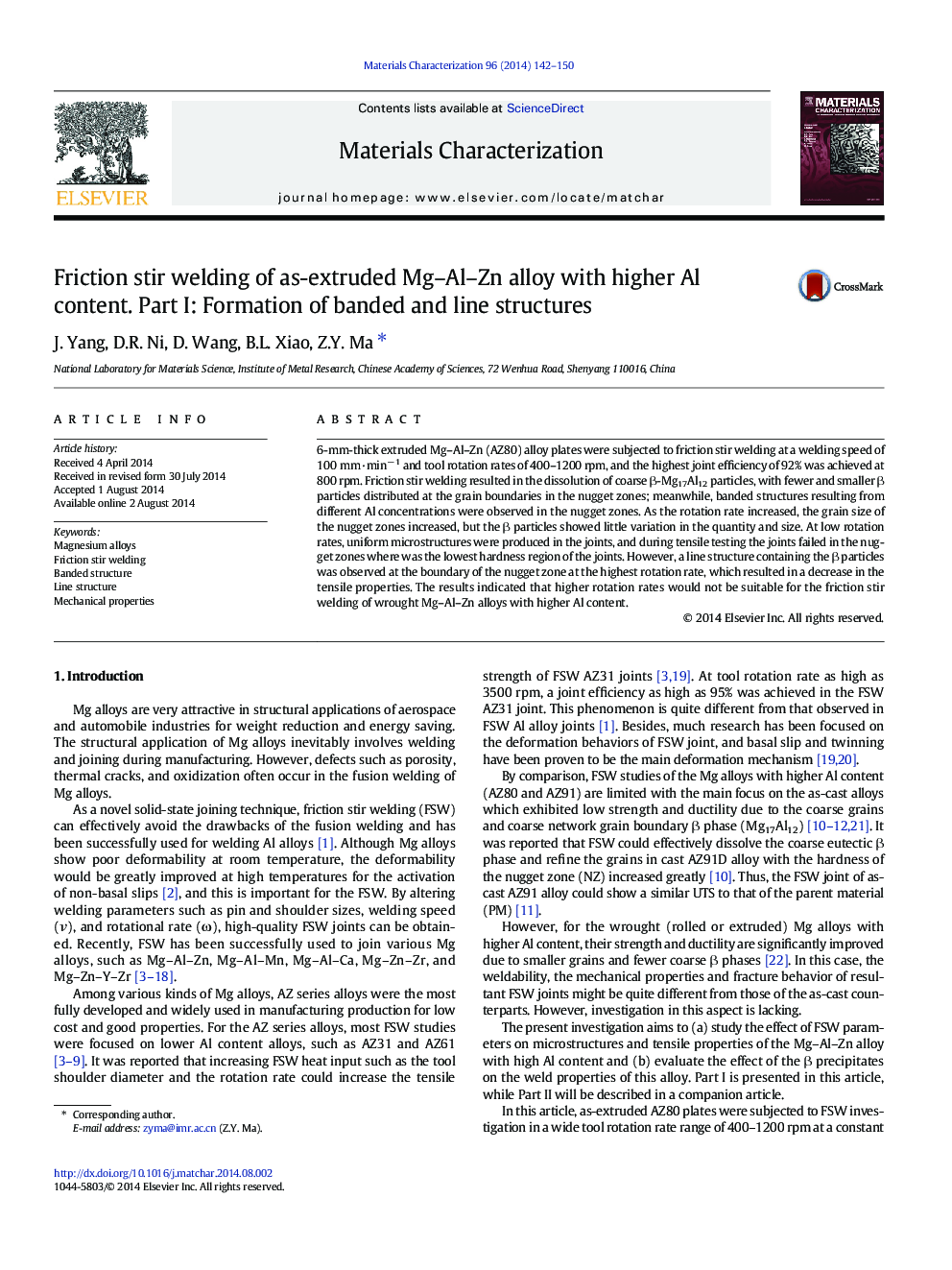| کد مقاله | کد نشریه | سال انتشار | مقاله انگلیسی | نسخه تمام متن |
|---|---|---|---|---|
| 1571054 | 1514391 | 2014 | 9 صفحه PDF | دانلود رایگان |
• Extruded AZ80 plates were successfully jointed by FSW with an efficiency of 92%.
• Fewer and smaller β particles were detected at grain boundaries in NZs after FSW.
• Banded structures resulting from different Al concentrations were observed in NZs.
• A line structure with coarse β was detected at NZ boundary at high rotation rate.
• FSW joint fractured along a line structure, showing reduced strength and elongation.
6-mm-thick extruded Mg–Al–Zn (AZ80) alloy plates were subjected to friction stir welding at a welding speed of 100 mm·min− 1 and tool rotation rates of 400–1200 rpm, and the highest joint efficiency of 92% was achieved at 800 rpm. Friction stir welding resulted in the dissolution of coarse β-Mg17Al12 particles, with fewer and smaller β particles distributed at the grain boundaries in the nugget zones; meanwhile, banded structures resulting from different Al concentrations were observed in the nugget zones. As the rotation rate increased, the grain size of the nugget zones increased, but the β particles showed little variation in the quantity and size. At low rotation rates, uniform microstructures were produced in the joints, and during tensile testing the joints failed in the nugget zones where was the lowest hardness region of the joints. However, a line structure containing the β particles was observed at the boundary of the nugget zone at the highest rotation rate, which resulted in a decrease in the tensile properties. The results indicated that higher rotation rates would not be suitable for the friction stir welding of wrought Mg–Al–Zn alloys with higher Al content.
Journal: Materials Characterization - Volume 96, October 2014, Pages 142–150
